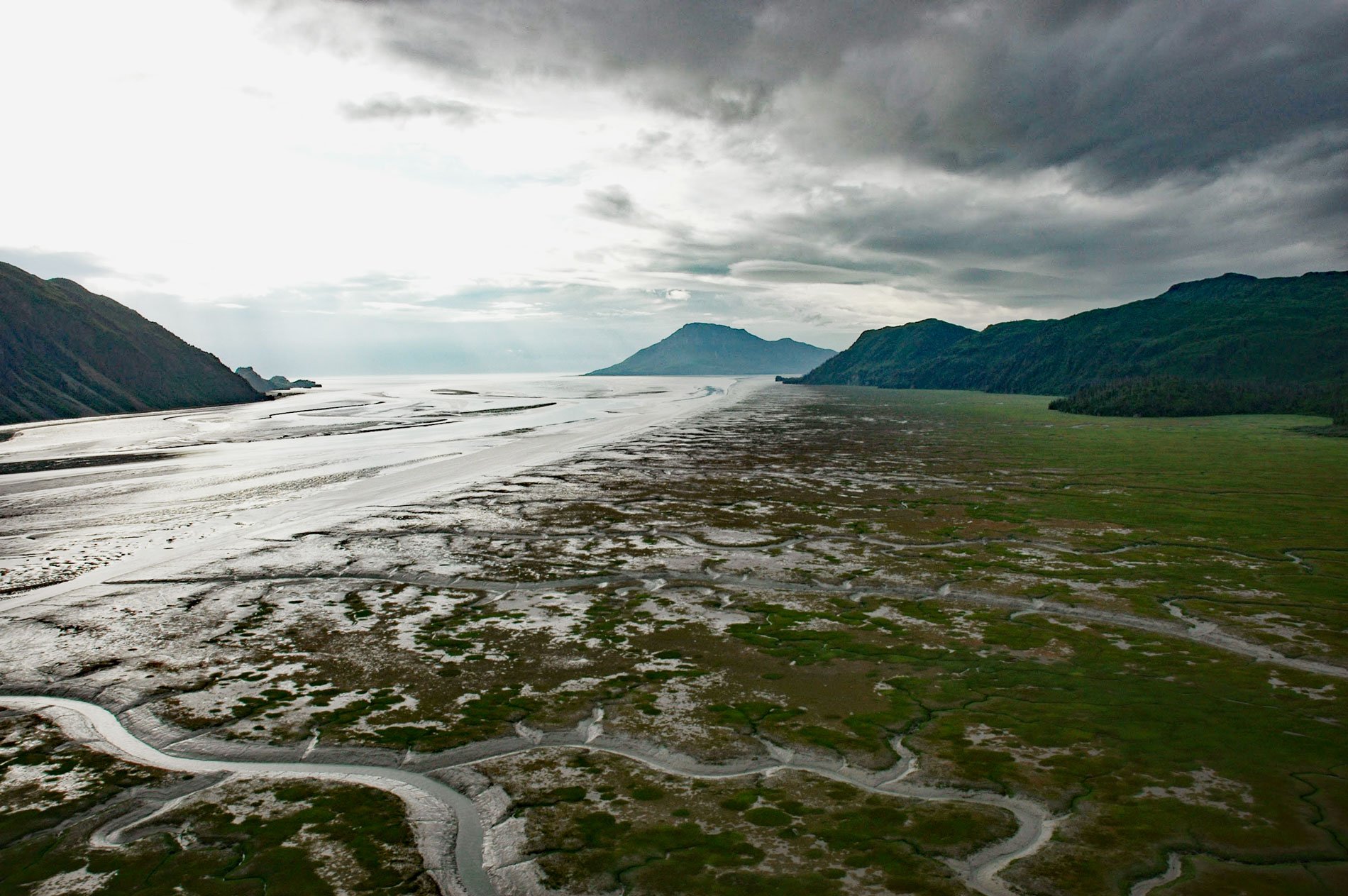Tuxedni Bay is an estuary that extends southeast for 14 miles (23 km) from the mouth of Tuxedni River to Cook Inlet at Chisik Island, about 59 miles (95 km) northwest of Homer and 57 miles (92 km) southwest of Kenai, Alaska. The Dena’ina name for the bay was published as “Tukuzit Bay” by Captain Mikhail Tebenkov in 1852. William Healey Dall of the U.S. Coast and Geodetic Survey reported the name as “Tuk-sed-ni” in the late 1800s. Tuxedni Bay is surrounded by Lake Clark National Park and Preserve and the Chigmit Mountains of the Aleutian Range, including two prominent glacier-covered stratovolcanoes. To the north of Tuxedni Bay is Redoubt Volcano, which at 10,197 feet (3,108 m) is the highest elevation in the Aleutian Range, and to the south is Iliamna Volcano at 10,016 feet (3,052 m). Redoubt has been active for millennia with major eruptions in 1902, 1966, 1989, and 2009. Iliamna is also active with nearly constant fumarolic steaming but the last confirmed eruption was in 1876. The Tuxedni River is partially fed by the Tuxedni Glacier that flows from the north flank of Iliamna.
The Tuxedni Bay geography is dominated by an extreme tidal range from 22.0 feet (6.7 m) to -5.6 feet (-1.7 m) creating extensive mudflats and salt marshes. Magnetic Island is on the north side of Tuxnedi Bay surrounded by mudflats. The island was named for the presence of magnetism, probably from magnetite ore. The island is significant as a site of prehistoric human habitation with stone tools found dating to 1800-1400 BCE. In 2020, the Tuxedni Bay Pictograph Site was added to the National Register of Historic Places. The rock art site is located on the north shore of the Tuxedni River and has been dated to 1400- 1500 AD. The pictographs were found in a rock shelter and first documented in 1932 by anthropologist Frederica de Laguna. Fossil Point on the west shore of the bay is one of the most productive marine invertebrate fossil sites known in Alaska.
In 1909, President Theodore Roosevelt established Chisik Island and its smaller neighbor Duck Island as a wildlife refuge for seabirds such as black legged kittiwakes, as well as bald eagles, and peregrine falcons. In 1970, these islands were designated as wilderness areas and in 1980 became a subunit of the Alaska Maritime National Wildlife Refuge. The topography of Chisik Island is rugged and the highest point has an elevation of 2,674 feet (815 m) at the north part of the island. Chisik Island slopes upward out of Cook Inlet from sandy beaches on the southern end to cliffs over 400 feet (122 m) tall at the northern end. In 1919, a cannery for razor clams and salmon was built at Snug Harbor on about 12 acres (5 ha) of land on the western shore of Chisik Island and it operated until 1980. A small seasonal fishing community still occupies a sand spit on the north end of the island. Read more here and here. Explore more of Tuxedni Bay here:

